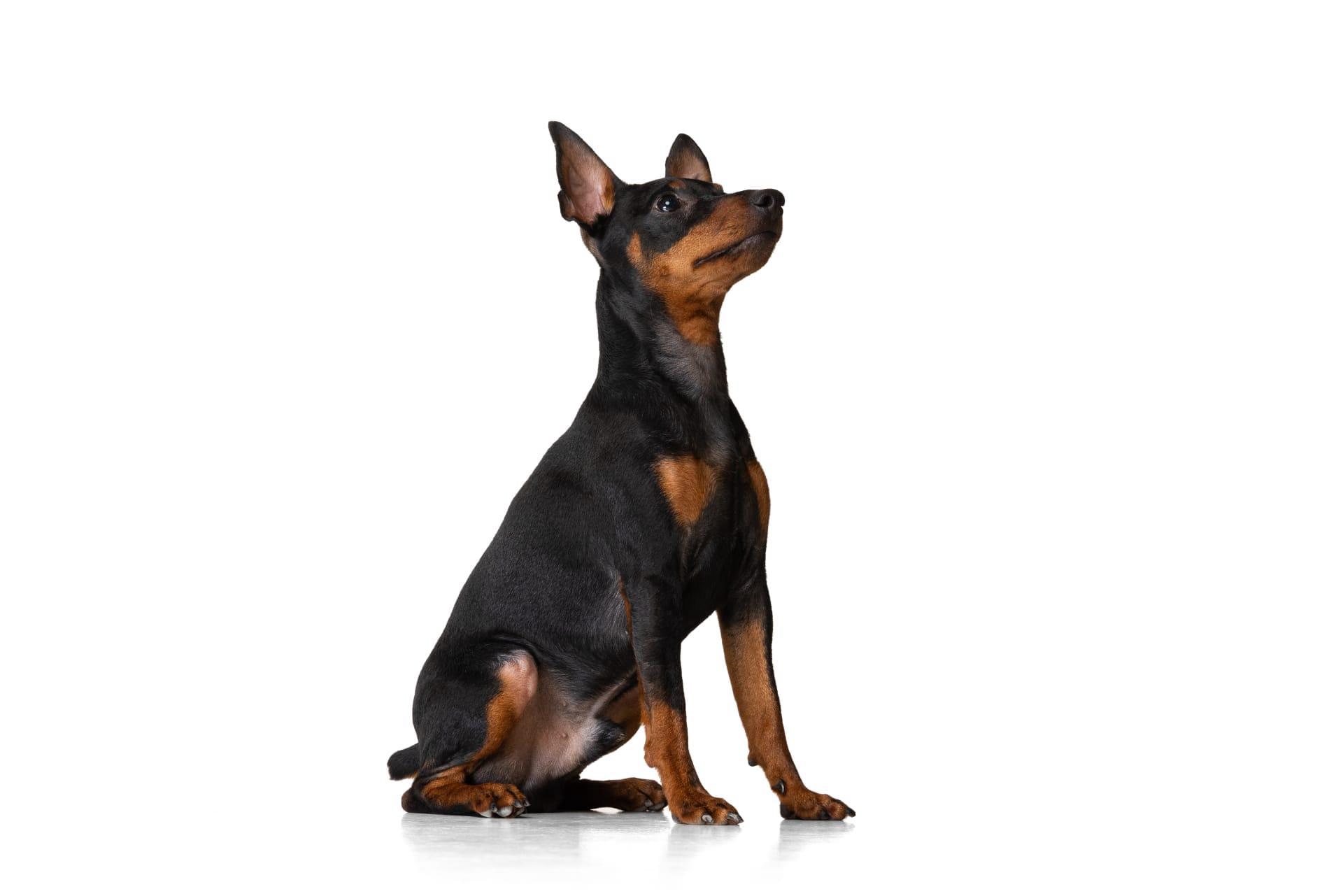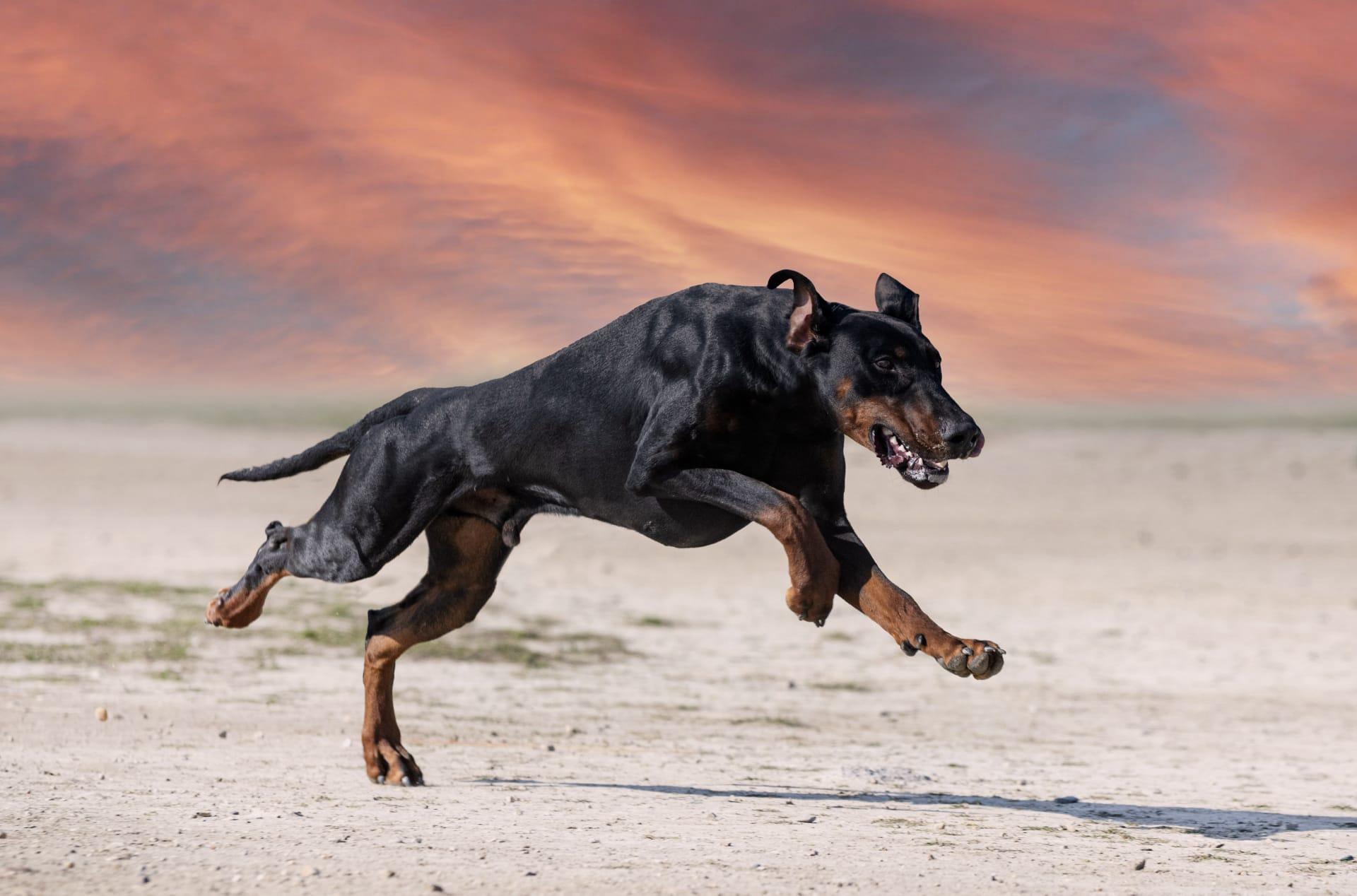Doberman
- Home /
- Mini Encyclopedia /
- Animal /
- Doberman
1
Dobermans belong to the mammalian class, specifically within the Canidae family, which includes dogs, wolves, foxes, and other similar animals. The Doberman is a distinct breed recognized by major kennel clubs, characterized by its athletic build, intelligence, and loyalty. Originating in Germany in the late 19th century, the Doberman is a relatively recent addition to the dog breed family.
The Doberman has a widespread distribution, especially popular in the United States, Canada, and European countries. Their adaptability to various climates and environments contributes to their global presence. Initially bred for protection and guarding, they've become favored in roles such as police and military work, search and rescue, and as family pets. Their versatility and trainability make them suitable for various living situations, from apartments to large estates.

2
Question: Are Dobermans naturally aggressive dogs?
Answer: This is a common misconception. Dobermans are often perceived as aggressive due to their history as guard dogs and their strong, muscular appearance. However, they are generally not naturally aggressive. Their temperament is largely influenced by their upbringing, training, and socialization. When properly trained and socialized from a young age, Dobermans are known to be loyal, gentle, and loving companions. They possess a strong protective instinct towards their family, which can be mistaken for aggression. The key to a well-behaved Doberman is consistent, positive reinforcement training and early socialization with various people and environments.

3
Dobermans have a unique and strong bond with humans. They are known for their loyalty and are often deeply attached to their owners. This breed thrives on human companionship and does best in a family environment where they can be close to their people. They are known to be excellent with children, often becoming protective and affectionate towards them. Dobermans are also used in therapeutic settings due to their sensitivity to human emotions, aiding in programs like emotional support and therapy dog work.
Their intelligence and trainability have made Dobermans popular in various roles alongside humans. They excel in obedience, agility, and working roles such as police and military service. Historically, they've been used in roles like personal protection, search and rescue, and as therapy dogs. Their keen senses and alert nature make them excellent watchdogs, and their loyalty makes them reliable and devoted companions.

4
The Doberman breed was first developed in the 1890s in Germany by a tax collector named Karl Friedrich Louis Dobermann. He aimed to create a medium-sized guard dog to accompany him during his rounds. The exact breeds used to create the Doberman are not known, but it's believed that the Rottweiler, German Pinscher, and Weimaraner, among others, were involved in its development. The goal was to produce a breed that was intelligent, loyal, and strong, with a natural instinct for protection.
Since its inception, the Doberman has undergone various changes. Early Dobermans were bred primarily for temperament and function as guard dogs, leading to a robust and intimidating physique. Over time, breeders have placed more emphasis on health, temperament, and conformation to breed standards. Modern Dobermans are slimmer, more athletic, and have a more refined appearance compared to their early counterparts. Breeding practices have also focused on reducing health issues common in the breed, such as heart problems and hip dysplasia.

5
Film: "The Doberman Gang" (1972, United States) is a unique film showcasing Dobermans. It's a crime comedy about a group of trained Dobermans used by a criminal to commit bank robberies. This film, while fictional, highlights the intelligence and trainability of the breed in an entertaining and humorous way.
Book: "Dobermans: A Complete Pet Owner's Manual" (United States, 2000) by Kerry Donnelly offers a comprehensive guide on caring for a Doberman. It covers topics like health, training, diet, and behavior, providing valuable information for both prospective and current Doberman owners.
Book: "The Doberman Pinscher: Brains and Beauty" (United States, 1997) by Rod Humphries and Sherry Wallis. This book delves into the history, temperament, and care of Dobermans. It also provides insights into the breed's use in various roles, from companionship to work, and is an excellent resource for understanding the multifaceted nature of these dogs.